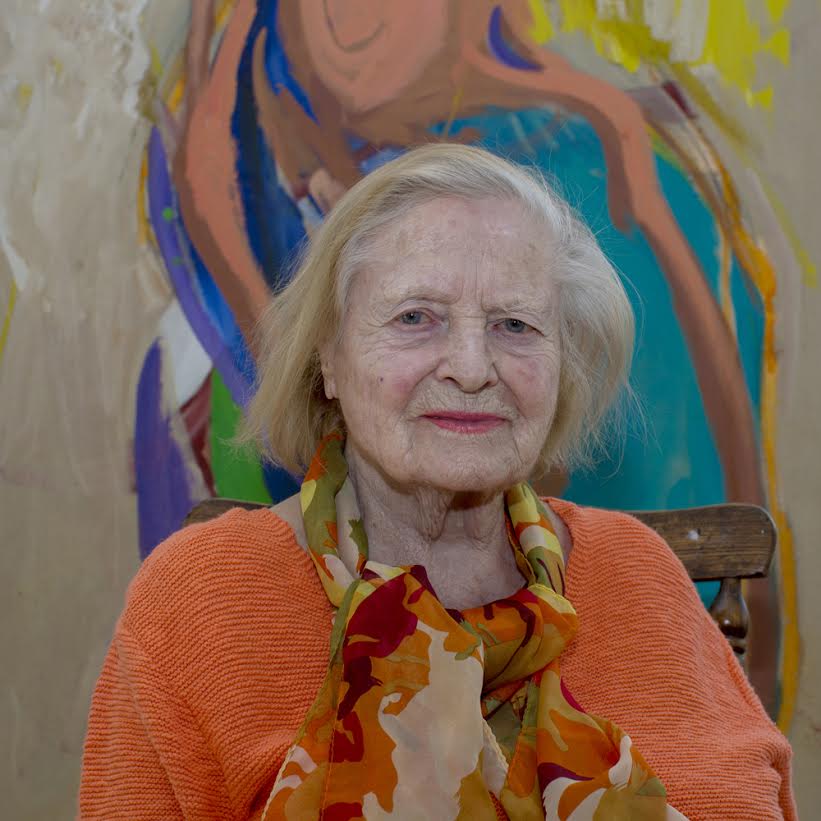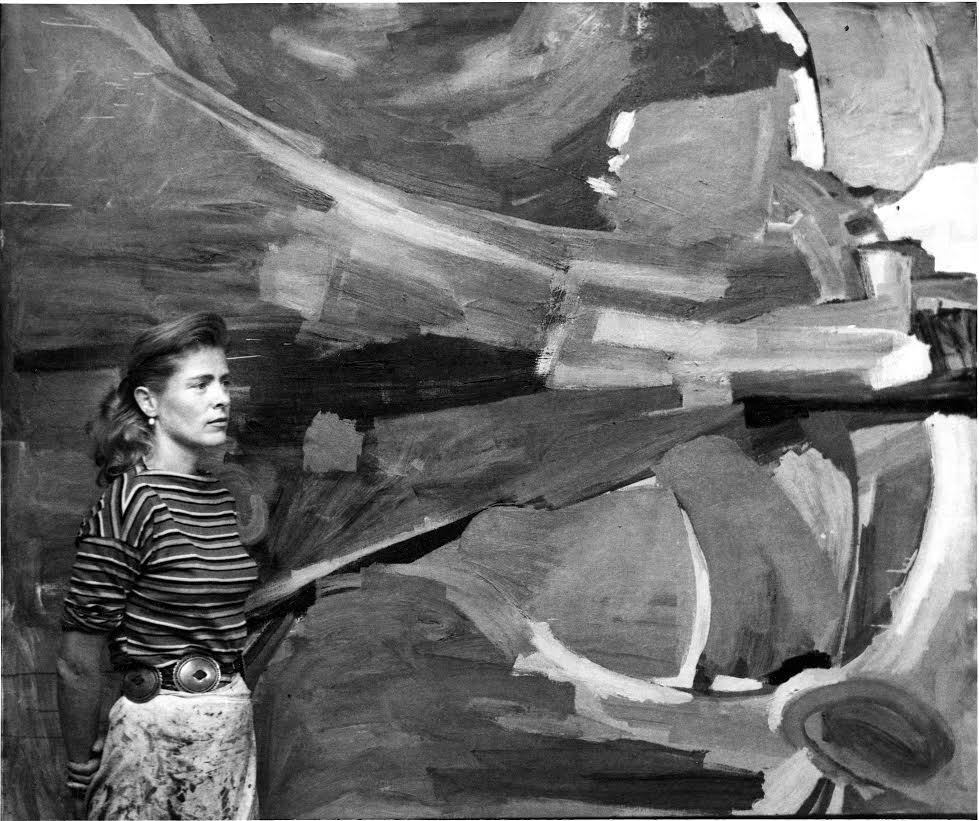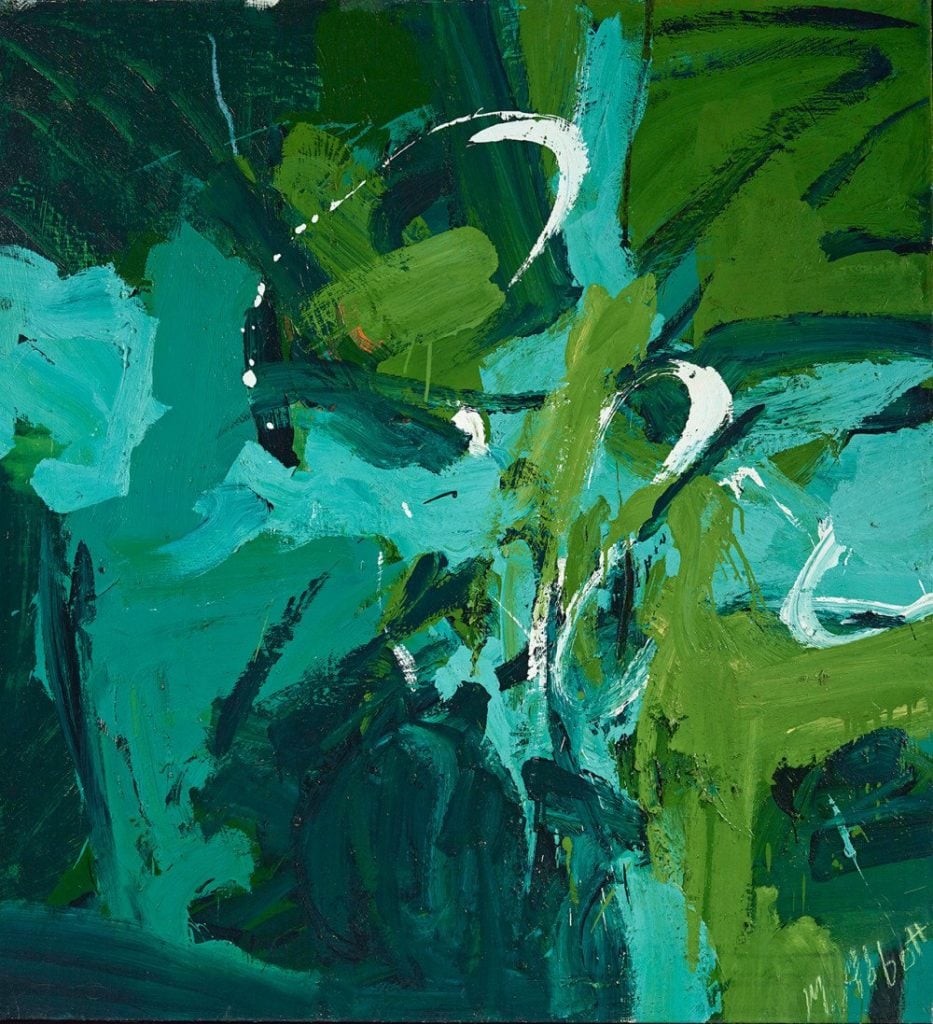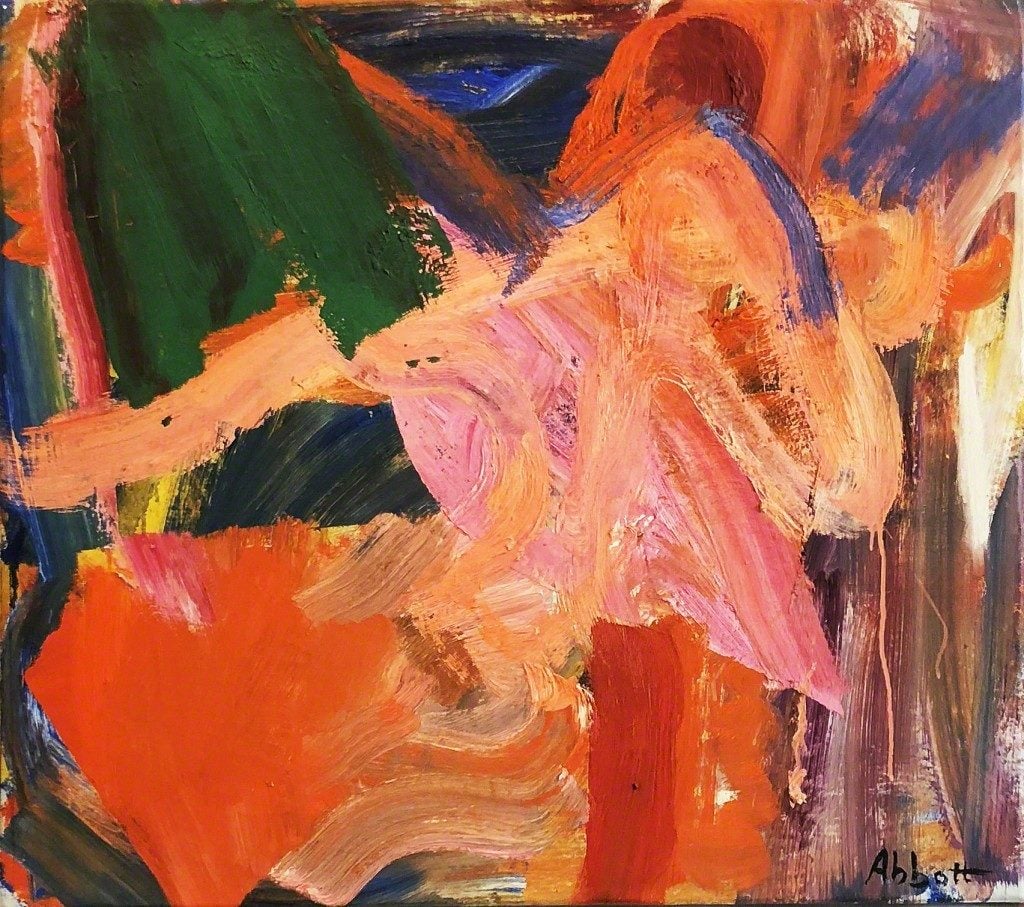People
Painter Mary Abbott, a Fixture of New York’s Abstract Expressionist Movement, Has Died at Age 98
The artist "maintained her home and light-filled studio until her death,” said one curator who knew her well.

The artist "maintained her home and light-filled studio until her death,” said one curator who knew her well.

Sarah Cascone

Abstract Expressionist painter Mary Abbott, known for her colorful canvases and sweeping brushstrokes, has died at the age of 98. McCormick Gallery in Chicago, which has represented the artist for almost 20 years, said the cause of death was heart failure.
In 2008, the New York Times praised Abbott as “one of the last great Abstract Expressionist painters of her generation.” Nevertheless, Abbott’s work received little scholarly recognition until 2016, when the Denver Art Museum organized the exhibition “Women of Abstract Expressionism,” which traveled to the Mint Museum in North Carolina and the Palm Springs Art Museum in California.
Abbott’s work was shown alongside that of 11 other women who were among the pioneers of the Ab Ex movement in the late 1940s and ’50s, including better-known figures such as Lee Krasner, Helen Frankenthaler, Elaine de Kooning, Joan Mitchell, and Grace Hartigan. (Those five painters were the focus of Mary Gabriel’s prize-winning 2018 book Ninth Street Women, in which Abbott was a recurring figure.)
One of just three living artists in the show, Abbott spoke on the occasion about what drew her to abstract painting. “It just hit me. I just liked it,” she said in a video produced by the museum. “Trying to do things representationally didn’t work for me. [With abstraction] I could talk in a different way.”

Mary Abbott in her studio (circa 1950). Photo courtesy of McCormick Gallery, Chicago.
Abbott was born in 1921 to Henry Livermore Abbott and Elizabeth Grinnell, members of New York’s social elite. Her family was descended from President John Adams, and counted the Roosevelts as close friends. As a young socialite in the early 1940s, she appeared on the cover of Vogue, launching a brief modeling career with further covers for Charm, Harper’s Bazaar, and Glamour.
At the same time, Abbott was taking classes at New York’s Art Students League and the Corcoran Museum School in Washington, DC. Deeply interested in nature, Abbott saw painting as a way to capture the beauty of the great outdoors. These interests ran in the family—aunt Mary Ogden Abbott was a sculptor, explorer, and landscape painter.
Following a brief marriage to painter Lewis Teague, from 1943 to 1946, Abbott made the decision to eschew the trappings of her privileged upbringing. She separated from her husband and moved to a cold water flat on 10th Street, immersing herself in the downtown scene, thanks in part to introductions from her friend, painter David Hare.
Soon a fixture at New York’s Cedar Street Tavern, where the Ab Ex cohort hung out, Abbott was one of the few women members of the club. She studied with Mark Rothko, Barnett Newman, and Robert Motherwell, and was also a lifelong friend of Willem de Kooning. Some observers, including art collector Asher Edelman, have argued that Abbott’s paintings inspired the older artist’s renowned landscapes, begun five years after hers.

Mary Abbot, All Green (1954). Courtesy of the Denver Art Museum, gift of Janis and Tom McCormick, ©Mary Abbott.
Abbott met her second husband, Tom Clyde, while in finalizing her divorce from Teague in 1949. The two married the next year and moved to Southampton, New York. Because Clyde had chronic back problems, the couple began taking annual winter trips to to Haiti and the Virgin Islands, which greatly influenced Abbott’s work.
“It was in the islands that Abbott’s work began to truly flourish,” McCormick Gallery said in a statement. “She was enthralled by the mountain landscape and the village markets. She had always felt that she was part of nature, and the immersion into the Haitian jungle suited her perfectly.” Gallery owner Tom McCormick called her “a great lady and amazing painter.”
Abbott was included in “Recent Drawings U.S.A.” at New York’s Museum of Modern Art in 1956. She also exhibited downtown at the Tanager Gallery, Kootz Gallery, Tibor de Nagy Gallery, and the annuals at the Stable Gallery. In 1958, she created a series of “Poetry Paintings” in collaboration with poet Barbara Guest, which appeared at New York’s Kornblee Gallery alongside work by Frank O’Hara, Kenneth Koch, and Larry Rivers.
In 1966, Abbott and Clyde divorced. After spending most of the 1970s teaching at the University of Minnesota in Minneapolis, she returned to New York and bought an apartment in the city and a house in Southampton, where she kept a studio in an abandoned ice house. Abbott split her time between the two properties up until giving up her Soho loft about a decade ago.

Mary Abbott, Untitled (c. 1955). Courtesy of Mark Borghi Fine Art.
“Mary maintained her home and light-filled studio until her death,” Denver Art Museum curator Gwen Chanzit, who organized the 2016 exhibition, told artnet News in an email. “A trip to the Hamptons for me was always a pleasure, especially to visit with Mary. She often talked about those she’d known and those important to her work, including Willem de Kooning and David Hare. She was a gracious host to those of us wanting to learn more about those important early years of Abstract Expressionism.”
A dearth of Abbott’s work has appeared at auction, according to the artnet Price Database. There are just 12 recorded sales, with the high-water mark reaching $28,125 for the 2008 sale of an untitled, undated work at Sotheby’s New York. Two of her paintings, Darker Than Amber and Mahogany Road, set to be auctioned at Chicago’s Hindman Auctions, carry pre-sale estimates of just $3,000–5,000 and $6,000–8,000, respectively.
Recent exhibitions of the artist’s work include “Mary Abbott: Paintings, Collages and Watercolors,” which appeared last fall at Suffolk County Community College’s Lyceum Gallery.